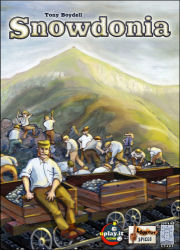The SdJ jury announces tomorrow the nominees for the Spiel des Jahres and Kennerspiel des Jahres. I don’t have much idea this year as there are several key contenders I’ve not played but here are my predictions (probably way off the mark):
SdJ nominees – La Boca, Escape: The Curse of the Temple, Smash Up
KedJ nominees – Rialto, Tzolkin: The Mayan Calendar, Libertalia
Recommended list – Saint Malo, Rondo, Wurfel Bohnanza, Hanabi, Star Wars: Angriff der Klonkrieger, Spectaculum, Tokaido, Legends of Andor, Farmerama, Palaces of Carrara.
Notre Dame
Played a good two player game of Notre Dame last night. Works really well with two and finished well within an hour even though it was Jan’s first play. Sad to say, she beat me 50-40 as she made good use of the VP-generating area (the Residence), while I had one or two problems controlling rats.
Review: Just in Time
Just in Time is a competitive puzzle game designed by Gunther Burkhardt and published by Ravensburger. It is in the same mould as Ubongo and FITS (the latter also a Ravensburger game) but is different enough that fans of this type of game should give it a try.

What’s in the box?
The game comes with 52 pentomino plastic tiles, thirteen each in four different player colours and 40 game boards (four sets of ten identical boards in the player colours). Then there are 27 challenge cards, nine of each showing three, four or five different shaped pentominos, plus a scoring track and a 30 second sand timer. The plastic tiles are of good quality but the game boards, cards and scoring track are made of fairly thin coated card rather than being the thick cardboard tiles I had expected. I don’t think it affects gameplay or how long they’ll stand up to repeated play but it may come as a slight surprise based on the usual quality of Ravensburger’s components.
How does it play?
The game is played over ten rounds with players in each round using the same game board. Each board is rated 3,4 or 5 and this illustrates how many pentominos must be placed within a grid of multiple squares set out in a particular shape. Some of the squares in the grid also display a number. A challenge card of a number matching the board rating is turned over and this indicates which pentominos the players must use for this board. One player shouts “Go” and players try to fit all the pentominos into the grid, while trying not to cover number squares if they can. Once a player has done this, they shout out the sum of uncovered numbers in their grid and everyone else has 30 seconds to complete their grid but they are not allowed to leave the same sum of uncovered numbers as those players that manage to finish and shout their scores before them. Once time has run out, anyone who didn’t complete their grid fails to score and everyone else scores the sum of their uncovered numbers. This is repeated over ten rounds and whoever then has the highest score is the winner.
What do I think?
This is a pretty typical puzzle game and often there will be players that can easily visualise a solution and those that cannot. This makes for a dull experience for those that fall into the latter group. However, there is a catch up rule that I’ve not mentioned yet and this does help to level the playing field a bit. If, at the end of a round, you are ten or more points behind the leader’s score, you get to use a smaller square tile as a replacement for an awkward shaped tile. This does make the puzzle quite a bit easier and can put the pressure on other players if you’re able to quickly solve a grid. This ought to ensure people stay in reasonable contention throughout the game, although the more spatially aware players are still more likely to win.
Just in Time is a good addition to the puzzle type game but it’s not a great addition. There are other games I would probably choose before this, such as FITS or Take It Easy, but for those who are hooked on this type of game, it does make an interesting change and the race element does make it quite tense. It is a very straightforward game so easy to play with the family or occasional gamers. It’s probably not one to play with hardened gamers though.
Note: I was provided with a review copy of the game.
Wayback When? – May ’93, ’98, ’03, ’08
Wayback When? is a review of the games I was playing five, ten, fifteen and twenty years ago with me highlighting the most memorable titles of each particular month in the vain hope that I might dig out some of them to play again. This month we’re looking at May 1993, 1998, 2003 and 2008.
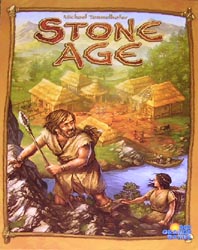 Â
 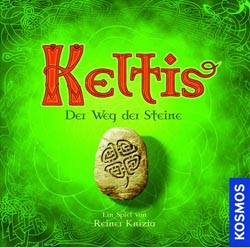
May 2008 saw the first play of Stone Age, one of the very best worker placement games (is it really five years old?). It very much hits the sweet spot for me and should definitely be played more often than it does. Also, this month, we got to play Keltis, Reiner Knizia’s first attempt to change Lost Cities into a multi-player board game.
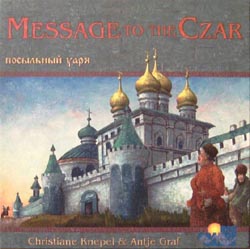
I only got to play four games during the month of May 2003 and this was the only new game I played. It wasn’t that good.
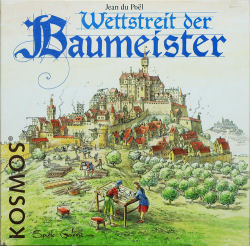 Â
 
May 1998: I again only played four games in this month but this time, they included two corkers. Wettstreit der Baumeister was a fun game about building castles whereas Durch die Wuste (or Through the Desert) was Reiner Knizia’s ‘Go’-like tile laying game. I think Nige bought my copy from me quite recently.
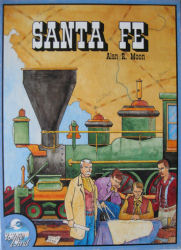 Â
 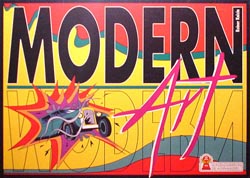 Â
 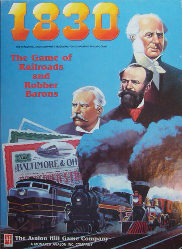
Twenty years ago saw me play Alan Moon’s Santa Fe and Reiner Knizia’s Modern Art for the first time. It also saw my first trip to Beer & Pretzels in Burton on Trent, which provided me with my one and only experience of 1830 – 7 hours was enough 18XX for me to last a lifetime.
April 2013 roundup
April saw me play 24 games of 21 different titles, 11 of which were new to me. The new games were Rialto, Skull & Roses, Cinque Terre, Kreuz & Quer, Ghooost! Ginkgopolis, King of Tokyo: Power Up, Mice & Mystics, Qwixx, Shadows Over Camelot: The Card Game and Tokaido.
I added nine new titles to the collection which were Those Pesky Garden Gnomes, 5 vor 12, Kreuz & Quer, Qwixx, Rialto, Skull & Roses, Cinque Terre, Casa Grande and Just in Time. The last two of these, however, were review copies that I received alongside Castles of Burgundy. My unplayed games list reduced by 1 to 23 this month and game of the month was a very easy decision this time as Rialto was a clear winner and could be my favourite game of the year so far.
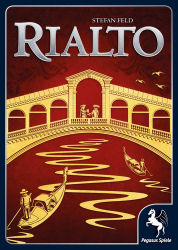
Review: The Castles of Burgundy
The Castles of Burgundy is a very challenging and fun strategy game for 2-4 players, designed by Stefan Feld and published by Alea / Ravensburger. It was originally released in 2011 in Germany but is now widely available in a multi-lingual edition.
The game is set in the Loire Valley and each player represents a prince trying to lead their estates to prominence by developing sections of the estate towards trade on the river, farming, mining, constructing valuable buildings or castles and developing scientific knowledge. Whoever best develops their estate is the winner.
The game is played over five phases each of which is made up of five rounds. In each round, every player takes a turn in which they can conduct two actions, meaning everyone gets 25 turns or 50 actions. The game has a central board which contains the stuff players can use in each phase as well as tracking the order in which players take turns, how the game is progressing through the rounds and phases, and a score track for showing how well the players are doing. In addition, each player has their own player board, representing their estate, and onto which they are going to place the castles, buildings, pastures, mines etc. that will build up their prestige (or score).
Each round the players will roll two dice each and in turn order, players will pick one of their dice and use it for one of four types of action:
- Take an estate tile from the central gameboard and put it in their warehouse;
- Place a tile from their warehouse onto their individual board, carrying out the benefit associated with the tile they placed;
- Sell one type of good from their goods shipping area, receiving victory points for each good sold; or
- Recruiting two workers, which enable you to manipulate the dice you roll.
This last action doesn’t directly advance your standing in the game but is important because the numbers on the dice you roll restrict how you carry out the other actions: estate tiles on the central board are spread over six numbered areas and you can only take a tile from the area shown on your die; the spaces in your estate are numbered 1-6 and you can only place a tile in the right numbered space; and each goods type is numbered 1-6 and you can only sell the type matching number on your die. Hence, having workers to change the dice results is pretty important.
There are several other details that add to the richness of the game but the above description gives you the main idea. Obviously, whoever has generated the most points over the course of the game can claim to be the most influential prince and the winner.
So what do I think?
There is a lot going on in this game. When you start to play, you may feel overwhelmed by the myriad of choices you’ve got. However, in some ways, this helps ease the players into the game because there are lots of ways to make your estate better and whatever you do will move you forward. As you move into the second and third phase, you’ll start to see how each of the elements work together and can hone in on what you think will work best. That’s not to say that your early decisions are meaningless, as an experienced player will get more out of those early turns and build on the advantage they gain. However, the dice bring an element of fortune into the game and a good start doesn’t necessarily guarantee a good result, particularly if you haven’t got workers to enable you to manipulate the dice results.
The game seems to scale very well between two and four players, as the number of tiles made available at the beginning of each phase varies based on the number of players. The box suggests the game takes between 30 and 90 minutes to play, less time with fewer players, but I would expect the first time you play to take longer as you try to come to grips with what you’re trying to do. In addition, if you’re playing with opponents who like to over-analyse all the options they have, that will make the game last longer.
Overall, this is a very good choice for someone looking for a game requiring a fair amount of thought and foresight and I enjoy it a lot. It is easy enough to play – roll two dice and pick from four actions – but it’s not easy to play well. You do need to think about what you’re trying to achieve so don’t choose this if you’re wanting to play something without some degree of concentration. I would recommend it for two, three or four players looking for a clever strategy game.
Disclaimer: I was supplied with an English review copy of the game although I had already played and own a copy of the original German release.
Telford Mini-Con 2013
Coming up on Saturday 20th April 2013 is the annual Telford mini-con in Shifnal. The event starts at 10.00am and finishes at around 10.00pm. The location is Shifnal Village Hall, Aston Street, Shifnal, Telford TF11 8DW. There is ample free parking next to the hall and the railway station is just a short walk away. More details can be found here.
Rialto
With a bit of luck, the second of Stefan Feld’s releases this year should be with me by Friday.
Wayback When? – April ’93, ’98, ’03, ’08
Wayback When? is a review of the games I was playing five, ten, fifteen and twenty years ago with me highlighting the most memorable titles of each particular month in the vain hope that I might dig out some of them to play again. This month we’re looking at April 1993, 1998, 2003 and 2008.
 Â
 

April 2008 saw the first appearance of three interesting games. Perikles was a very approachable Martin Wallace game; Glory to Rome was another clever multi-purpose cards type game in the same vein as San Juan and Race for the Galaxy; Lascaux was a neat card game that I can’t quite remember how it played but everyone thought it was pretty good.
 Â
 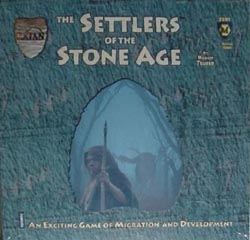
Ten years ago saw us play one of Reiner Knizia’s all-too-rare these days gamer’s games, Amun Re, an excellent game that really does need to get played again soon. Also that month, Settlers of the Stone Age was a nice addition to the Catan universe where everyone expands out from Africa into Europe, Asia and the Americas, while the original African areas get turned into deserts. An interesting twist.
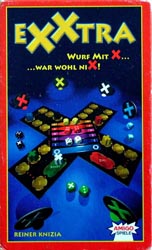 Â
 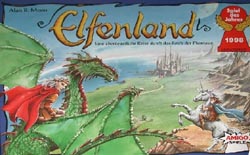
April 1998 saw the release of one of Reiner Knizia’s earliest dice games and Exxtra (also published as Excape) remains a fun push your luck game. Also, Alan Moon’s reimplementation of Elfenroads, the Spiel des Jahres winning Elfenland was played for the first time.
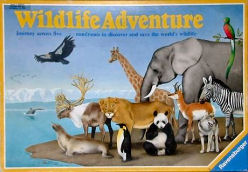 Â
 
Finally, in April 1993, I was introduced to the classic Wildlife Adventure, a game that is currently going through a Kickstarter campaign for re-publication, and the clever election card game, Koalition.
March 2013 roundup
In March, I managed to play 27 games of 17 different titles, 8 of which were new to me. The new games were Tournay, Spectaculum, Snowdonia, Snake Oil, DC Comics Deck-Building Game, Coup, Star Wars: Angriff der Klonkrieger and Legendary: A Marvel Deck-Building Game.
I added seven new titles to the collection which were Ghooost! Kairo, The Manhattan Project, Sun Sea & Sand, Snake Oil, Star Wars: Angriff der Klonkrieger and Legendary: A Marvel Deck-Building Game. The last of these was my most played game of the month with seven outings. My unplayed games list increased slightly to 24 this month and game of the month could have been Legendary but actually turned out to be Tony Boydell’s Snowdonia, a game I really should have picked up at lst year’s Essen in hindsight.
